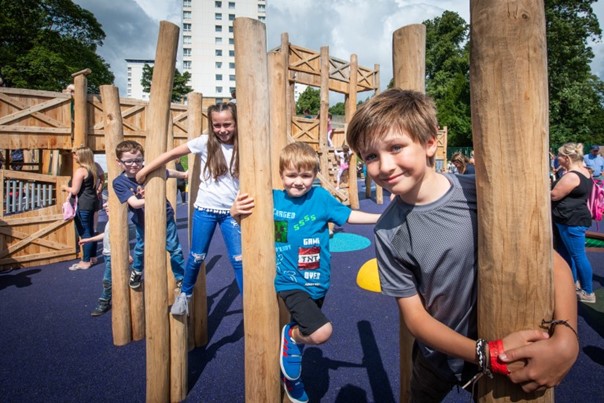The Antonine Wall is part of the ‘Frontiers of the Roman Empire’ transnational World Heritage Site. The 60 km site cuts across five councils and one city in central Scotland. The wall runs through many disadvantaged communities of Scotland, many of which fall into the 20% most deprived in the country. The key idea behind ‘Rediscovering the Antonine Wall’ was to use the wall as a catalyst for the social and economic development of the neighbouring communities. The challenge was how to foster participation amongst a diverse audience, and those less likely to engage with cultural heritage.
The Antonine Wall is a monument that can be difficult for non-specialists to understand. ‘Rediscovering the Antonine Wall’ is a series of projects that allows local communities to explore the stories embedded in the wall to inspire creative and educational opportunities. The communities co-design projects, programmes and activities that reflect what the wall means to them and what they want to do with their local heritage assets.
The six partners managing the wall (five local authorities and Historic Environment Scotland) carried out an extensive public consultation in the communities along the wall. The consultation revealed a lack of awareness of the wall and its value. The six partners put in place a steering group and a project team to manage the project in close cooperation with community groups. The partners successfully applied for the necessary private, public and EU funding. The project team supports the community groups to deliver the projects they want to develop (ranging from 5,462 EURO to 1,6386 EURO), taking care of the financial management and contractual elements. The partners and local communities have developed a series of projects, including: educational and outreach programmes such as a Big Roman Camp for scout groups, a ‘21st Century Legion volunteering programme’, building five Romanthemed play facilities and 30 community projects related to the wall, ranging from Roman-themed gardens to work with refugees. The initiative started in 2018 and is ongoing. Further funding sources are being explored to continue and expand the project.
A project team runs the daily work. Stakeholders are involved depending on each project, including organisations like Scottish Canals, Forestry and Land Scotland and Nature Scotland. Specialists within local and national authorities (arts staff, museum curators, archaeologists, environmental experts, etc.), as well as external contractors support the delivery of projects. The community, community councils, and local heritage groups participate. Volunteers contribute with research, content development and managing events. Schools, youth groups, university and college departments along the wall are involved in skilldevelopment projects. Projects are developed with museums and local heritage organisations.
Over 30 community projects related to the wall. Public spaces that were decaying or out of use have been refurbished and re-appropriated by the community. By working on real-life projects, students and volunteers develop their skills. New resources and content related to the wall have been developed, which can be accessed by a much wider range of visitors and communities. The community is active in deciding how to use their local heritage assets. Highlights the wider benefits of cultural heritage: regeneration, spaces for healthier living and increased local pride, amongst others.
Find more about the project here








